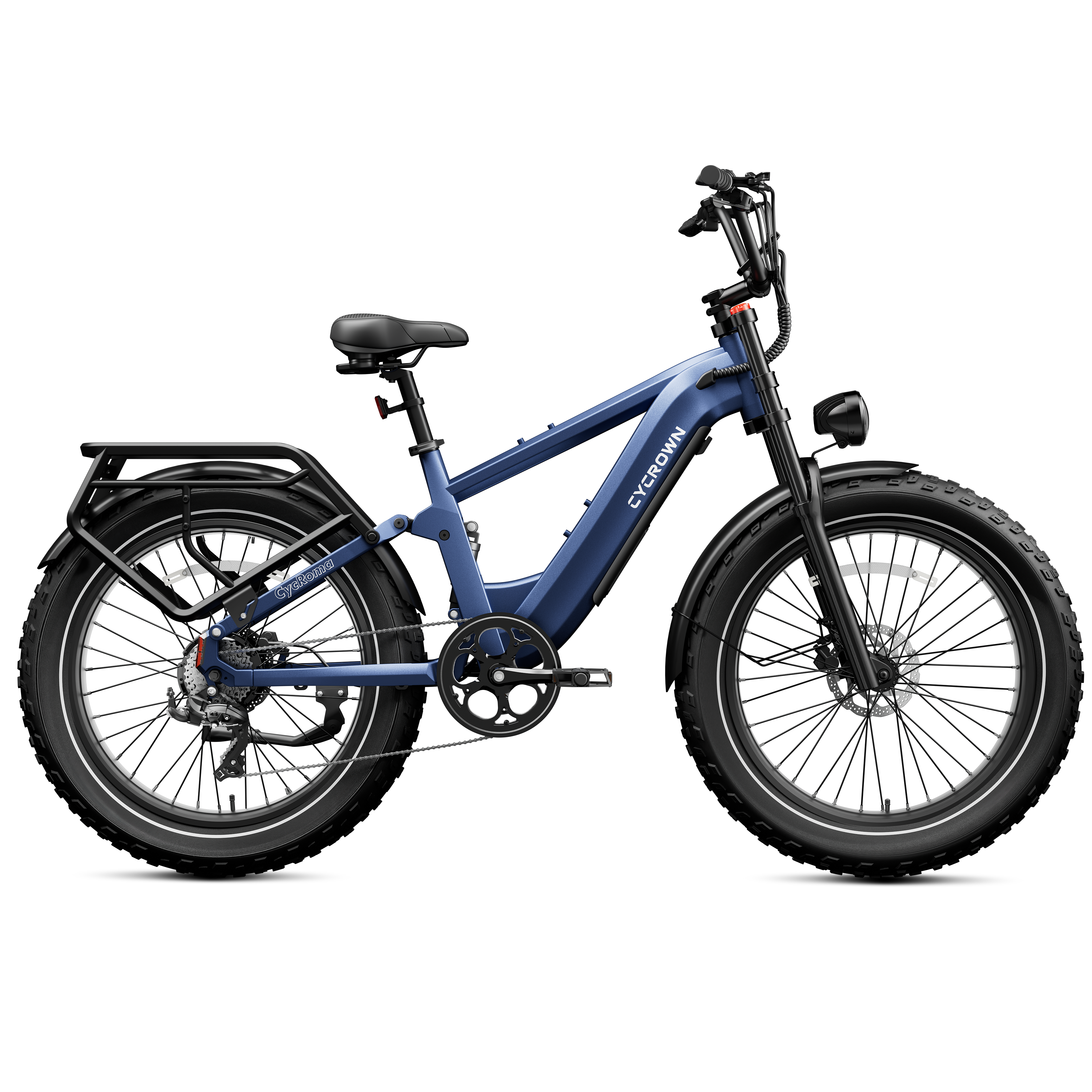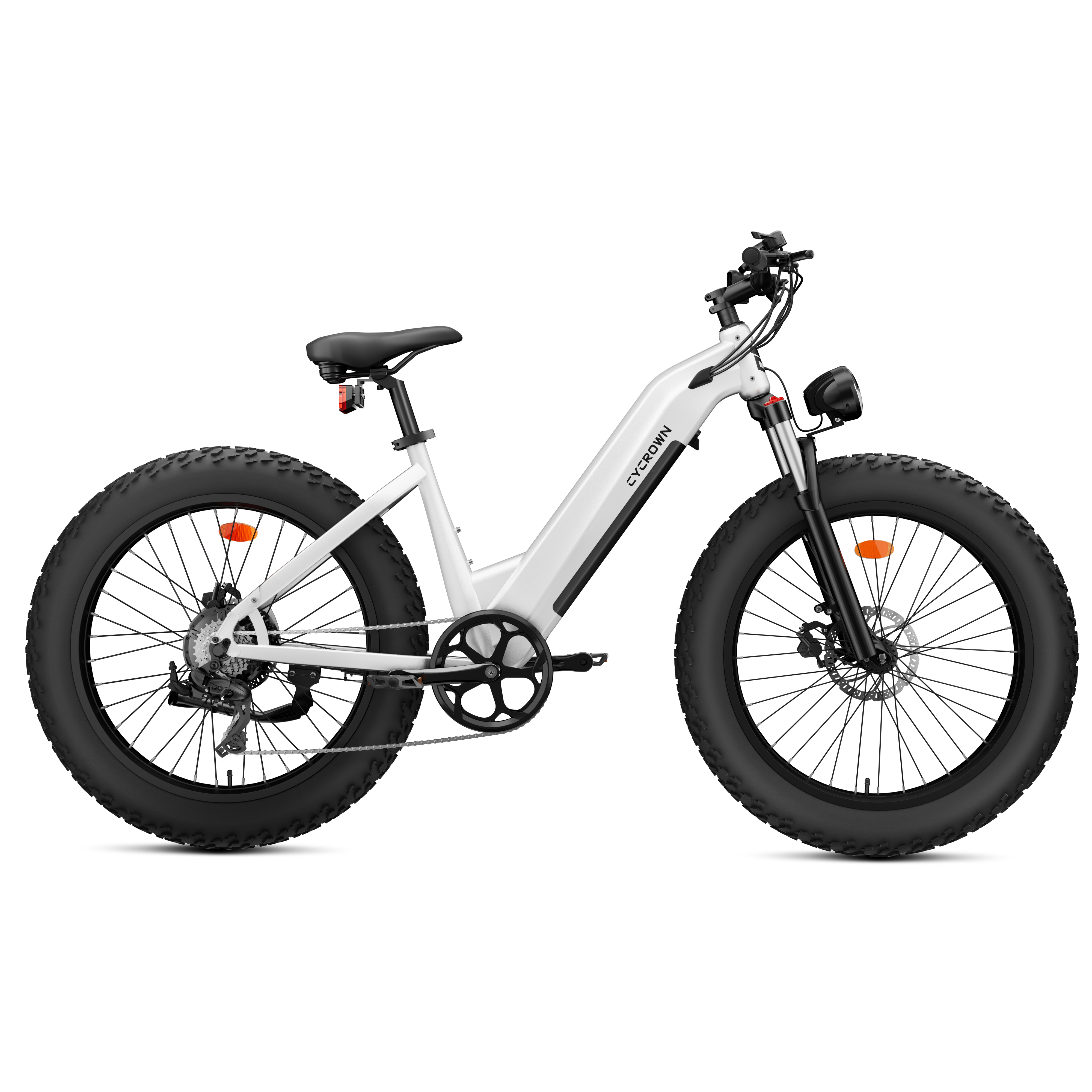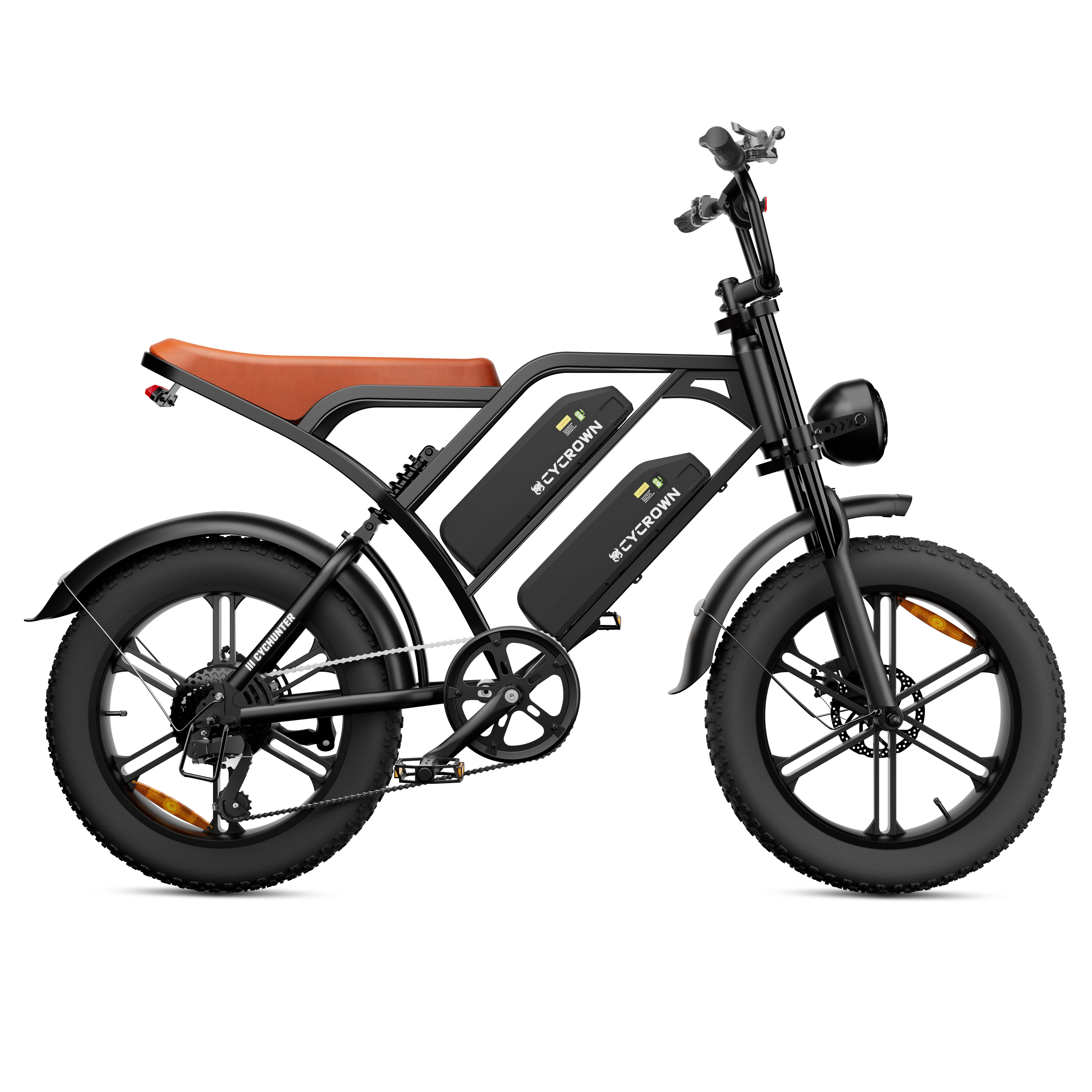Finding the right mountain bike tire pressure is a key step for every beginner cyclist looking to improve their ride. It's not just about preventing flats — the correct pressure affects everything from your bike's traction to how smoothly you can handle bumps and turns.
Our guide is here to simplify mountain bike tire pressure for you. If your tires are too soft, you might face punctures and a bike that's hard to control, but if they're too inflated, your ride gets unnecessarily rough. We'll help you find that sweet spot for a smoother, more controlled ride on the trails.
Understanding Tire Pressure Basics
One of the most important factors in mountain biking is tire pressure. Proper tire pressure can make a huge difference in your ride, affecting your bike's handling, traction, and comfort. Riding with incorrect tire pressure can lead to poor performance, increased risk of punctures, and even accidents.
Too much tire pressure can make your bike feel harsh and uncomfortable, causing you to bounce around and lose traction. On the other hand, too little tire pressure can make your bike feel sluggish and unresponsive, and increase the risk of pinch flats.
Units of Measurement: PSI and Bar
Tire pressure is measured in pounds per square inch (PSI) or bar. PSI is the most commonly used unit of measurement in the United States, while bar is more commonly used in Europe.
A pressure gauge is used to measure tire pressure accurately. A tire pressure gauge is a simple tool that attaches to the valve stem of your tire and measures the air pressure inside. It is important to check your tire pressure regularly, ideally before every ride, to ensure that your tires are properly inflated.
The recommended tire pressure for mountain bikes can vary depending on several factors, including rider weight, terrain, and tire width. Generally, the recommended tire pressure for mountain bikes falls within the range of 30-35 PSI. However, this is just a general guideline, and you should adjust your tire pressure based on your personal preferences and riding style.
Factors Influencing Mountain Bike Tire Pressure

When it comes to mountain bike tire pressure, several factors come into play. In this section, we'll take a closer look at some of the most important factors that can influence your tire pressure.
Rider Weight and Weight Distribution
Your weight and weight distribution are crucial when it comes to determining the right tire pressure for your mountain bike. If you're a heavier rider, you'll need to run higher tire pressure to support your weight and prevent pinch flats. On the other hand, if you're a lighter rider, you can get away with running lower tire pressure.
Additionally, weight distribution plays a role in determining tire pressure. If you're carrying a heavy backpack or riding with panniers, you'll need to take that weight into account when setting your tire pressure. A good rule of thumb is to add 2-3 psi for every 10 pounds of additional weight.
Tire Width and Rim Size
The width of your mountain bike tires and the size of your rims also play a role in determining the right tire pressure. Generally, wider tires require lower pressure, while narrower tires require higher pressure. This is because wider tires have a larger contact patch, which distributes your weight more evenly and requires less pressure to maintain stability.
Similarly, the size of your rims can affect your tire pressure. If you have wider rims, you can run lower tire pressure without risking pinch flats. Conversely, if you have narrower rims, you'll need to run higher pressure to prevent the tire from rolling off the rim.
Terrain and Trail Conditions
Finally, the terrain and trail conditions you'll be riding on should also influence your tire pressure. If you're riding on smooth, hard-packed trails, you can get away with running lower tire pressure for better traction and a smoother ride. However, if you're riding on rocky or technical terrain, you'll need to run higher tire pressure to prevent pinch flats and maintain control.
Additionally, if you're riding in wet or muddy conditions, you'll want to run slightly lower tire pressure to improve traction and prevent slipping. On the other hand, if you're riding in dry, dusty conditions, you'll want to run slightly higher tire pressure to prevent the tires from sinking into the loose dirt.
Setting the Perfect Tire Pressure
When it comes to mountain biking, tire pressure is an essential factor that can significantly affect your ride's comfort, traction, stability, and control. Finding the sweet spot for your tire pressure can be a challenging task, but with some experimentation, you can achieve the optimal pressure for your riding style and preferences.
Finding the Sweet Spot
The sweet spot is the tire pressure that provides the best balance between grip, comfort, and speed. To find your sweet spot, start by inflating your tires to the manufacturer's recommended pressure. Then, go for a ride and pay attention to how the tires feel. If they feel too bouncy or harsh, reduce the pressure by 2-3 PSI and try again. If they feel sluggish or unstable, increase the pressure by the same amount. Keep adjusting until you find the pressure that feels just right.
Adjusting for Grip and Comfort
Once you have found your sweet spot, you can fine-tune the pressure for better grip and comfort. If you ride on loose or muddy terrain, lowering the pressure by 2-3 PSI can increase traction and prevent the tires from slipping. On the other hand, if you ride on hard-packed or rocky terrain, increasing the pressure can improve stability and prevent pinch flats.
When it comes to comfort, you can experiment with different pressures to find the one that suits your preferences. Some riders prefer a softer ride, while others prefer a firmer one. Keep in mind that lower pressures can increase the risk of pinch flats and make the tires more prone to damage.
Tire Pressure for Different Riding Styles
Different riding styles require different tire pressures. If you are a cross-country rider, you may prefer a higher pressure for better speed and efficiency. However, if you are a downhill rider, you may prefer a lower pressure for better traction and control.
Advanced Considerations for Tire Pressure
Tubeless vs. Tubed Tires
When it comes to mountain bike tires, you have two options: tubeless or tubed. Tubeless tires have become increasingly popular in recent years due to their ability to run at lower pressures without the risk of pinch flats. However, they do require a bit more maintenance and setup than traditional tubed tires. If you're running tubeless tires, make sure to check the sealant level regularly and replace it when necessary. Additionally, note that tubeless tires may require slightly higher pressures than their tubed counterparts to maintain the same level of stability and support.
Effect of Temperature on Tire Pressure
Temperature can have a significant impact on tire pressure, especially in extreme weather conditions. As the temperature drops, tire pressure decreases, and as it rises, tire pressure increases. It's important to keep this in mind when setting your tire pressure, especially if you're planning on riding in particularly hot or cold conditions. If you're unsure of how temperature will affect your tire pressure, consult a tire pressure chart or experiment with different pressures to find what works best for you.
Tire Pressure Maintenance and Adjustment
Maintaining and adjusting your tire pressure is an important part of mountain bike maintenance. Regularly checking your tire pressure can help prevent pinch flats and ensure optimal performance on the trail. It's a good idea to check your tire pressure before every ride and adjust it as necessary based on the terrain, weather conditions, and your personal preference.
Tools and Techniques for Measuring and Adjusting Tire Pressure
Using a Tire Pressure Gauge Accurately
Measuring your tire pressure is crucial for maintaining optimal performance and safety. A tire pressure gauge is a simple tool that allows you to accurately measure the pressure in your tires. When using a tire pressure gauge, make sure to follow these steps:
- Remove the valve cap from your tire.
- Press the gauge firmly onto the valve stem.
- Hold the gauge in place until the reading stabilizes.
- Record the pressure reading and compare it to the recommended PSI for your tire.
Make sure your tire pressure gauge is accurate and calibrated properly. A digital gauge is more accurate than an analog one, but both types will work. Check your tire pressure regularly and adjust as needed.
The Role of Bike Pumps
A bike pump is an essential tool for maintaining proper tire pressure. There are two main types of bike pumps: floor pumps and mini pumps. A floor pump is best for home use and provides more accurate pressure readings. A mini pump is portable and great for on-the-go adjustments.
When using a bike pump, make sure to:
- Check the recommended PSI for your tire.
- Attach the pump to the valve stem.
- Pump the tire until it reaches the recommended PSI.
- Remove the pump and replace the valve cap.
When to Adjust Tire Pressure
Adjusting your tire pressure can improve your ride and prevent damage to your tires. Here are some situations when you should adjust your tire pressure:
- Change in terrain: If you're riding on a different type of terrain, such as going from smooth pavement to rocky trails, adjust your tire pressure accordingly.
- Change in weather: Temperature changes can affect tire pressure, so check your tires before each ride.
- Change in load: If you're carrying a heavy load, adjust your tire pressure to compensate.
- Change in tire: If you switch to a different type or size of tire, adjust your tire pressure to the recommended PSI.
Using a mountain bike tire pressure calculator can also help you determine the optimal pressure for your tires based on your weight, riding style, and terrain. Remember to check your tire pressure regularly and adjust as needed for a safe and comfortable ride.
Conclusion
Mastering your mountain bike tire pressure is crucial for optimizing your ride's safety and enjoyment. Regular checks and adjustments for varying trails and conditions will ensure your cycling sessions are smooth and efficient.
If you're looking to upgrade your gear alongside fine-tuning your tire pressure, check out our top-notch mountain e-bike collection. Pair your newfound knowledge with a high-performance bike from Cycrown and experience the trails like never before.
Frequently Asked Questions on Mountain Bike Tire Pressure
What PSI should my mountain bike tires be?
The recommended PSI for mountain bike tires varies depending on factors such as rider weight, tire width, and trail conditions. A good starting point is around 30-35 PSI for front tires and 35-40 PSI for rear tires. However, you may need to adjust the pressure based on your personal preferences and the terrain you are riding on.
What PSI should MTB be in snow?
When riding in snow, it is recommended to decrease the tire pressure to increase the surface area of the tire that contacts the ground. This will provide more traction and stability on the slippery surface. A good starting point is around 8-10 PSI for front and rear tires. However, you may need to adjust the pressure based on the snow conditions and your personal preferences.
How many PSI for a 26 inch bike tire?
The recommended PSI for a 26-inch bike tire varies depending on factors such as rider weight, tire width, and riding conditions. A good starting point is around 30-35 PSI for front tires and 35-40 PSI for rear tires. However, you may need to adjust the pressure based on your personal preferences and the terrain you are riding on.
What is the best tire pressure for a gravel bike?
The best tire pressure for a gravel bike depends on factors such as rider weight, tire width, and riding conditions. A good starting point is around 35-40 PSI for front tires and 40-45 PSI for rear tires. However, you may need to adjust the pressure based on your personal preferences and the terrain you are riding on.
How to tell if bike tires need air?
To tell if your bike tires need air, you can perform a simple squeeze test. Squeeze the tire with your fingers, and if it feels soft or squishy, it may need air. You can also check the recommended PSI range for your tires, and use a tire pressure gauge to check the current pressure. If the pressure is below the recommended range, you may need to add air.
What PSI should road bike tires be?
The recommended PSI for road bike tires varies depending on factors such as rider weight, tire width, and riding conditions. Generally, a good starting point is around 80-100 PSI for both front and rear tires. However, you may need to adjust the pressure based on your personal preferences and the terrain you are riding on.
How to tell if a bike tire is over inflated?
You can tell if a bike tire is overinflated by checking the tire pressure with a pressure gauge and comparing it to the manufacturer's recommended range usually found on the tire sidewall.
If the reading is above the recommended maximum, the tire is overinflated. Additionally, an overinflated tire may feel extremely hard when pressed, have a bulging appearance, and provide a harsher ride.










